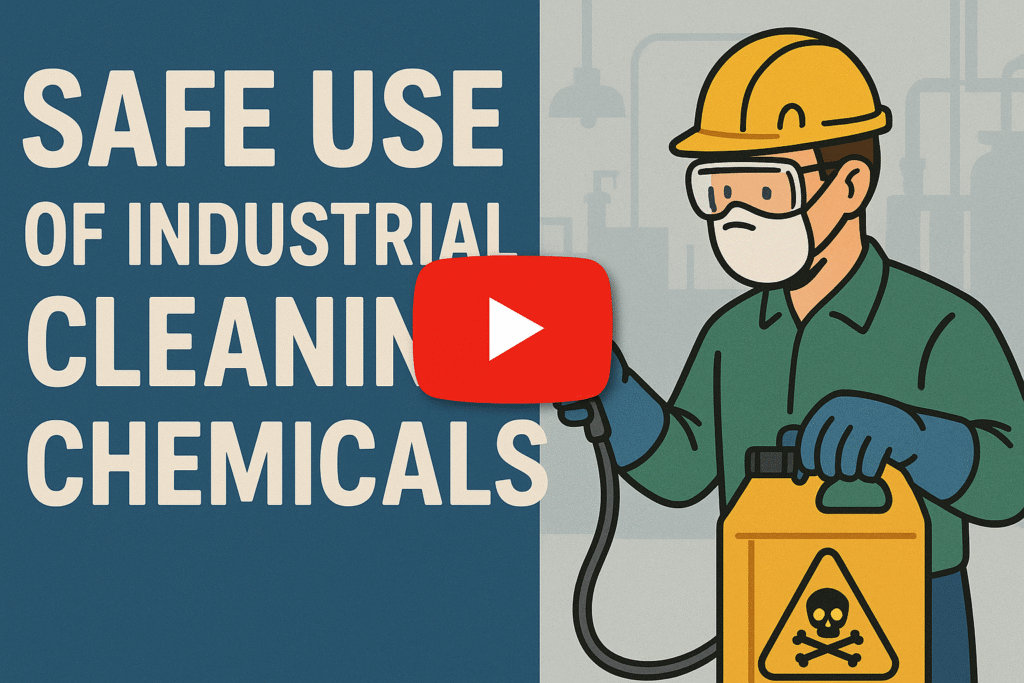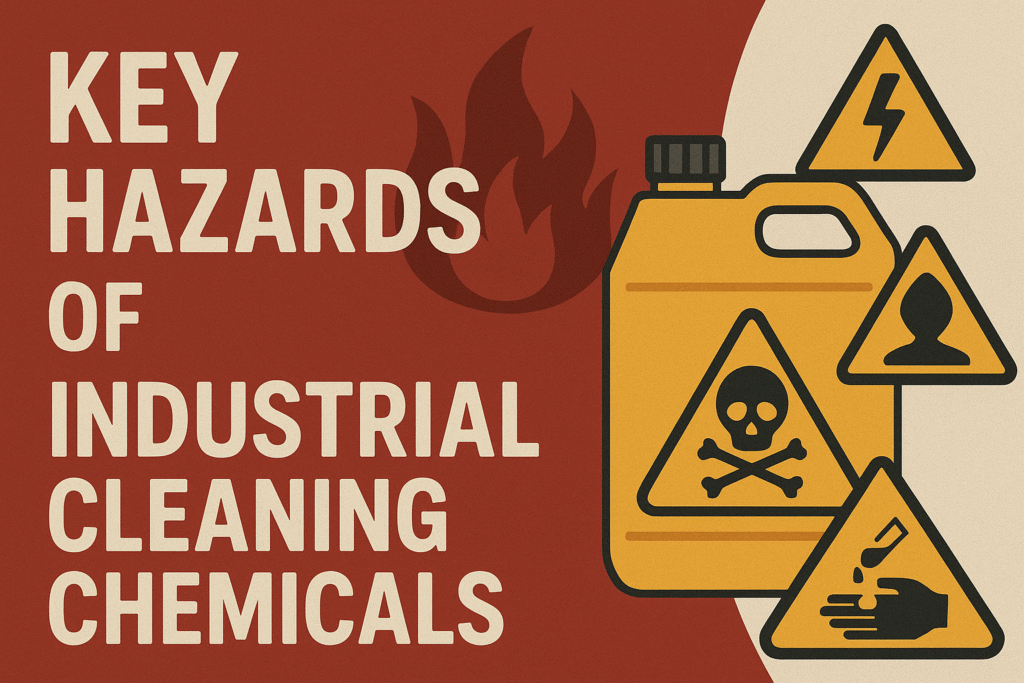Safe Use of Industrial Cleaning Chemicals in the Workplace is a critical priority for employers and employees alike.

From hospitals and manufacturing plants to warehouses and office spaces, industrial cleaning products play a vital role in maintaining hygiene, preventing contamination, and ensuring compliance with health standards.
- Why the Safe Use of Industrial Cleaning Chemicals in the Workplace Matters
- Key Hazards of Industrial Cleaning Chemicals
- Safe Handling Practices for Industrial Cleaning Chemicals
- Workplace Policies for Safe Chemical Use
- Case Study: Common Chemical Safety Failures
- Practical Safety Tips for Workers
- External and Internal Resources
Safe Use of Industrial Cleaning Chemicals
However, these chemicals also pose significant risks if not handled correctly. Proper training, protective equipment, and workplace policies are essential to protect workers from chemical exposure, burns, respiratory hazards, and long-term health issues.
Why the Safe Use of Industrial Cleaning Chemicals in the Workplace Matters

Industrial cleaning chemicals such as solvents, disinfectants, degreasers, and corrosive cleaners are more potent than household cleaners. While effective for heavy-duty cleaning, they can cause:
- Skin irritation and burns if spilled or splashed.
- Respiratory issues from inhaling fumes or vapors.
- Eye damage from accidental splashes.
- Fire and explosion hazards when improperly stored.
According to the Canadian Centre for Occupational Health and Safety (CCOHS), many workplace chemical accidents occur due to inadequate training, poor labeling, or improper storage. Employers must prioritize chemical safety as part of their overall OHSE program.
Key Hazards of Industrial Cleaning Chemicals
Understanding the risks is the first step toward control:

1. Chemical Burns and Skin Contact
Acids, alkalis, and solvents can cause severe burns, rashes, and long-term skin damage. Workers should avoid direct contact and always use gloves designed for chemical resistance.
2. Respiratory Hazards
Vapors from ammonia, bleach, or solvent-based cleaners can damage lung tissue. Without proper ventilation, even short exposure may lead to headaches, dizziness, or chronic illness.
3. Toxic Reactions
Mixing incompatible chemicals (like bleach and ammonia) produces toxic gases that can be fatal. Training workers on chemical compatibility charts is essential.
4. Fire and Explosion Risks
Flammable solvents and aerosols can ignite if exposed to sparks, heat, or static electricity. Storage in approved safety cabinets is a must.
Safe Handling Practices for Industrial Cleaning Chemicals
Proper Training and Awareness
All workers who use cleaning chemicals must be trained in:
- Reading and interpreting Safety Data Sheets (SDS).
- Recognizing chemical hazard labels under the WHMIS/GHS system.
- Emergency response procedures in case of spills or exposures.
Personal Protective Equipment (PPE)
The choice of PPE depends on the chemical used but may include:
- Chemical-resistant gloves (e.g., nitrile or neoprene).
- Safety goggles or face shields.
- Respirators with appropriate cartridges for vapor protection.
- Protective aprons and footwear.
Ventilation and Engineering Controls
- Use fume hoods, exhaust fans, or open ventilation systems when handling volatile chemicals.
- Install spill containment systems in storage areas.
Storage and Labeling
- Store chemicals in original containers with clear labels.
- Separate incompatible substances using segregated shelving.
- Keep flammable liquids in fire-rated safety cabinets.
Workplace Policies for Safe Chemical Use
Employers should integrate cleaning chemical safety into their Occupational Health and Safety Management System (OHSMS):
- Chemical Inventory Management
Maintain an updated list of all cleaning agents used on site, along with their hazards and SDS. - Safe Work Procedures
Develop written instructions on safe handling, dilution, and disposal methods. - Emergency Preparedness
Ensure eyewash stations, showers, and spill kits are easily accessible. Workers must know evacuation routes in case of a chemical release. - Health Surveillance
For workers regularly exposed to strong cleaning agents, periodic health checks (respiratory and skin assessments) are recommended.
Case Study: Common Chemical Safety Failures
In one warehouse incident, workers unknowingly mixed bleach with an acidic cleaner, producing chlorine gas. Several employees required hospitalization due to respiratory distress. The root causes included poor labeling and lack of training.
This example underscores why Safe Use of Industrial Cleaning Chemicals in the Workplace must be embedded in daily safety routines.
Practical Safety Tips for Workers
- Never mix chemicals unless approved in the SDS.
- Always wear appropriate PPE, even for “routine” cleaning.
- Report any symptoms such as coughing, dizziness, or rashes immediately.
- Follow dilution ratios strictly—over-concentration increases risks.
- Dispose of chemical waste according to local environmental regulations.
External and Internal Resources
- Canadian Centre for Occupational Health and Safety – Chemical Hazards
- Occupational Safety and Health Administration (OSHA) – Hazard Communication Standard
- Internal resource: See our guide on Respiratory Protection and VOC Exposure for more detailed PPE strategies.
The Safe Use of Industrial Cleaning Chemicals in the Workplace is not just about compliance—it is about safeguarding lives. Employers must invest in training, provide the right PPE, and ensure safe storage systems.
Workers, on the other hand, must stay vigilant, follow procedures, and respect the hazards these chemicals present. A strong safety culture, built on awareness and prevention, ensures that cleaning chemicals remain tools of hygiene, not sources of harm.

By embedding safe practices into daily routines, organizations can prevent accidents, protect workers’ health, and stay compliant with OHSE regulations.
Safe Use of Industrial Cleaning Chemicals in the Workplace should always remain at the heart of every occupational safety program.

No comments yet